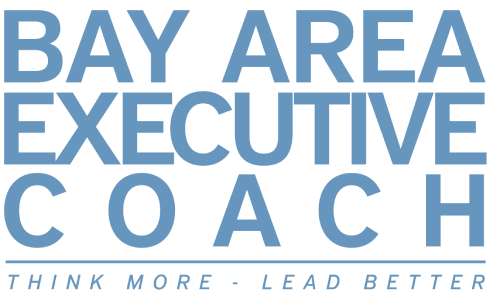“Problems can arise if one friend has to supervise or evaluate the other.” – Dr. Jan Yager, author of “Friendshifts: The Power of Friendship and How It Shapes Our Lives”
This article picks up where Part 1 left off by presenting two more common mistakes managers make that can hold them back from being as successful as they aspire to be. Read this material and compare it against your own experience as a manager or leader to see if there may be some element of these unhelpful behaviors holding you back. 
A manager’s job can be lonely. They may find themselves enjoying the company of trusted, often supportive, subordinates, and it may also feel natural to surround themselves with people they get along with. A friendly relationship between colleagues doesn’t pose a problem, but an emotional involvement with subordinates will inevitably lead to dilemmas.
The benefits of having friendships in the workplace between coworkers are clear. A friendly workplace drives higher employee retention, provides emotional support, and thereby lowers employee stress levels. Friendships can also benefit teams by increasing cooperation and engagement. These benefits may also be present within boss/employee friendships, however, one cannot deny the imbalance of power.
What causes a beneficial situation to turn negative is when there is a “souring” of the friendship. A personal conflict would undoubtedly negatively affect both parties and their professional relationship. Such a friendship can also have a profound impact on the rest of the team, as other members may not feel heard or appreciated. And finally, a personal relationship can affect judgment and the ability of the manager to make difficult professional decisions.
Would you protect your friend from layoffs? How would you handle dishonesty or a request for a raise that doesn’t appear deserved? How do you give an honest review to someone who is your friend? These situations are difficult to handle under any circumstance, but even more complicated to objectively handle when emotional involvement clouds the judgment, which it undoubtedly will.
A boss/employee friendship may have a chance, within strong boundaries and between emotionally mature parties. However, a leader would better serve the company by focusing on fostering an inclusive and positive work environment for the whole team. Deloitte workplace research shows that 94 percent of executives and 88 percent of employees believe that corporate culture contributes to the success of the company. The same study showed that employees valued intangible elements of culture building, such as “regular and candid communications,” “employee recognition” and “access to management,’” even above “financial compensation.”
Management can dramatically influence the workplace culture by establishing and communicating clear core values, fostering teamwork and open communication, setting transparent, measurable performance goals and creating an environment where all team members feel accepted and individual differences are celebrated.
In short, don’t make mistake number three by getting too close to someone who might become a subordinate one day. Moreover, avoid becoming too friendly with directs regardless of the fact that given different circumstances, certain individuals would make great friends due to interests you have in common and personalities that really mesh.
“We work four days a week because, after a three-day weekend, anything is possible.”
(Anna Ross, CEO Kester Black)
American workers, on average, clock more hours than foreign counterparts. They take less time off and are expected to be digitally available any time of the day. Research shows though that all those extra hours fail to make employees more valuable or productive. There is evidence that the long hours are not just harmful to the workers but also the companies. 
Add to the decline in productivity the health risks to employees, which are numerous: impaired sleep, depression, heavy drinking, diabetes, impaired memory, and heart disease. For the company, the consequences include absenteeism, turnover, and rising health insurance costs.
Hmm, might there be a better way?
In 2019, Microsoft tested an idea. It was called the “Work Life Choice Challenge,” and comprised a four-day work week program without salary reduction. Surprisingly, productivity jumped 40%.
A New Zealand company also received attention for test driving a similar four-day week; the experiment was so successful that they made it a permanent option for all its employees. While workers reduced their hours from around 40 to 32 per week, they were 20% more productive, showed a 24% improvement in their work-life balance, and a 7% decrease in their stress levels. They were found to collaborate more effectively, prioritize better, and gain respect for coworkers’ time and have increased loyalty to their company.
Now it’s true that a shorter workweek may not be easy to achieve for some organizations, but companies should still examine where time is spent inefficiently. Many workers complain that the biggest time-wasters they face are “fixing a problem not caused by me,” administrative work and meetings. Indeed, inefficiencies can have a noticeable negative effect on morale and contribute to feelings of burnout. Dan Schawbel, author and research director, Future Workplace, claims that eliminating some of these distractions can “create more time to innovate, collaborate, develop skills and relationships, and serve customers while opening the door to creative scheduling options.” 
Moving towards sustainable changes requires companies to modify their culture, develop new norms around time and evaluate workflow. Dr. Alex Soojung-Kim Pang, a consultant and author of “Shorter: Work Better, Smarter and Less—Here’s How,” has studied many companies that have reduced work hours while maintaining or improving productivity and profitability. He is convinced that shorter work hours can help companies flourish if it is done thoughtfully.
So you may be wondering how it is that all this talk of a shorter work week translates into a manager’s mistake. Well, here it is: Are you asking your people to work more than 40 hours on a regular basis? If so, then that may be a mistake if you like a happy workforce that will be more loyal, efficient, innovative and productive.
We hope this article has been helpful and instructive. If you would like help with being a better manager, contact us to learn about coaching, training and assessments all designed to do just that.
In case you have not read part 1 of this article, find it here.
Featured photo sourced from Pexels which can be found here and secondary photo also sourced from Pexels can be found here.










